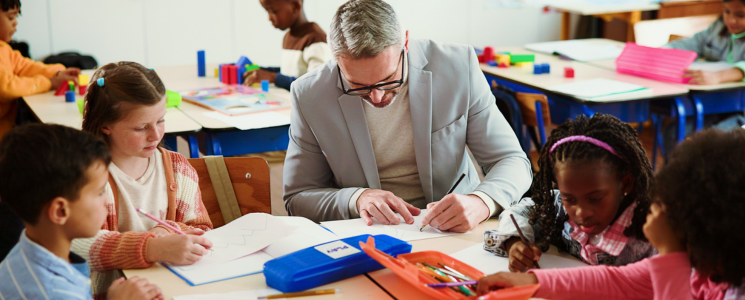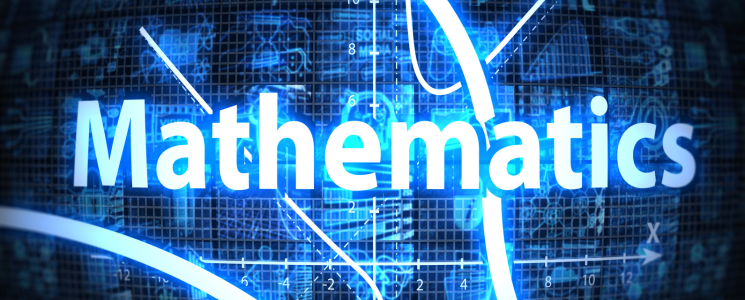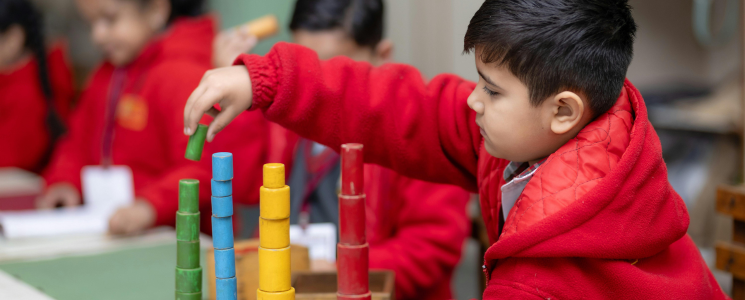As students reach Year 6, they stand at an exciting turning point in their education journey. It’s the final year of primary school, a time filled with growth, curiosity, and preparation for the transition to secondary learning. The Australian Curriculum Year 6 plays a key role in shaping this stage. It provides a strong foundation across subjects while developing independence, problem-solving skills, and a deeper understanding.
In this guide, we’ll explore each of the major Year 6 subjects in the Australian Curriculum, breaking them down into clear, engaging insights. Whether you’re a parent, teacher, or student, you’ll find everything you need to understand how Year 6 builds confidence and readiness for the next big step.
Understanding the Australian Curriculum Year 6 Framework
Before diving into the subjects, it’s helpful to understand how the Australian Curriculum Year 6 framework is structured.
The curriculum is designed around three key dimensions:
1. Learning Areas – the subjects students study.
2. General Capabilities – skills such as critical thinking, literacy, and digital competence that apply across all learning areas.
3. Cross-Curriculum Priorities – themes like sustainability, Indigenous perspectives, and Asia–Australia engagement that connect learning to the real world.
By Year 6, students are encouraged to explore, question, and apply knowledge in complex situations. They move beyond basic recall and start developing analytical and creative thinking skills. Each subject plays a part in building both academic and personal growth, preparing students for the challenges of high school.
English: Building Strong Communication and Expression
English remains at the heart of the Australian Curriculum Year 6. It focuses on strengthening reading, writing, speaking, and listening skills while introducing students to a wide range of literature and media.
Students read novels, poetry, news articles, and digital content to expand their comprehension and vocabulary. They learn to identify key ideas, analyze characters, and explore themes in texts. Writing becomes more structured and purposeful, with students crafting persuasive essays, imaginative stories, and informative reports.
Grammar and punctuation are refined through practice, while oral presentations and discussions help build confidence in communication. Teachers also encourage creative projects such as podcast scripts, book reviews, and storytelling exercises.
English in Year 6 helps students find their voice and express ideas with clarity and creativity, a vital skill that supports all other subjects in the Australian Curriculum Year 6.
Mathematics: Strengthening Problem-Solving and Logical Thinking
Mathematics in the Australian Curriculum Year 6 is designed to develop critical thinking, logical reasoning, and real-world application. Students move from basic calculations to more abstract concepts, learning how to apply math to everyday situations.
The main strands of Year 6 Mathematics include:
-
Number and Algebra – fractions, decimals, percentages, and ratios are explored in greater depth. Students also begin solving equations and understanding patterns.
-
Measurement and Geometry – students learn about angles, area, volume, time zones, and coordinates. They also start using formulas to calculate area and perimeter.
-
Statistics and Probability – this introduces data interpretation, graphs, and basic probability concepts.
Mathematics lessons often involve practical activities, like budgeting a class event or designing a simple map, to show how math connects to life outside the classroom.
By the end of Year 6, students are expected to handle multi-step problems with confidence and explain their reasoning clearly. These skills form an essential foundation for secondary-level math and science learning.
Science: Encouraging Discovery and Curiosity
The Science strand in the Australian Curriculum Year 6 helps students understand how the world works through observation, experimentation, and evidence-based thinking. It aims to build curiosity while developing scientific literacy.
The content is organized into four main areas:
1. Biological Sciences – students study ecosystems, life cycles, and the interdependence of living things.
2. Chemical Sciences – they explore properties of materials, mixtures, and how substances can change form.
3. Physical Sciences – this covers energy, light, electricity, and forces.
4. Earth and Space Sciences – students learn about Earth’s place in the solar system, seasons, and natural resources.
Hands-on experiments are a big part of Year 6 Science. Activities like building circuits, observing plants, or modeling natural processes help students see science in action. They also learn about scientific inquiry, posing questions, making predictions, and collecting data.
The Australian Curriculum Year 6 Science program aims to make students think like young scientists, fostering analytical minds ready for future STEM exploration.
Humanities and Social Sciences: Understanding the World and Its People
The Humanities and Social Sciences (HASS) area in the Australian Curriculum Year 6 connects history, geography, civics, and economics to help students understand society and their place within it.
History
Students explore Australia’s development, including the early interactions between Indigenous peoples and European settlers. They learn about key events, influential figures, and how history shapes identity and culture.
Geography
Year 6 Geography focuses on global connections, how people, environments, and economies are interlinked. Students study continents, trade, natural resources, and global citizenship.
Civics and Citizenship
Students begin to understand democracy, government systems, and individual rights. They learn what it means to be an active and responsible citizen in modern Australia.
Economics and Business
At this level, students are introduced to simple economic principles such as needs versus wants, resources, and consumer choices.
Through discussions, projects, and inquiry-based learning, students in HASS gain a better understanding of how communities function and how they can contribute meaningfully to society.
Health and Physical Education: Building Active and Balanced Lifestyles
The Australian Curriculum Year 6 encourages a holistic approach to well-being. Health and Physical Education (HPE) helps students understand the importance of fitness, nutrition, and mental health.
In the Health component, students discuss personal identity, healthy relationships, and decision-making. Topics such as online safety, emotional regulation, and self-awareness are covered to help students navigate challenges responsibly.
Physical Education includes both individual and team sports. Students develop coordination, endurance, and teamwork through games like basketball, athletics, and swimming. They also learn about goal setting and personal fitness.
The combination of health and activity promotes lifelong habits that support both physical and mental wellness.
The Arts: Encouraging Creativity and Expression
Creativity plays a major role in the Australian Curriculum Year 6. The Arts curriculum allows students to explore visual arts, music, dance, drama, and media arts.
Each area gives students opportunities to experiment with materials, express ideas, and understand cultural influences. They might paint self-portraits, compose simple songs, create short performances, or design multimedia presentations.
Art lessons also connect with other subjects. For instance, a history topic might inspire a drama performance, or a science theme could lead to an environmental art project.
By engaging in The Arts, students build imagination, collaboration, and confidence, skills that go beyond the classroom and into real-life creativity.
Technologies: Preparing Students for the Future
In an increasingly digital world, technology education is a key part of the Australian Curriculum Year 6. The subject is divided into two areas, Design and Technologies and Digital Technologies.
- Design and Technologies teaches problem-solving through hands-on design challenges. Students learn to plan, build, and evaluate products that solve real-world problems.
- Digital Technologies introduces coding, algorithms, and data management. Students might design simple apps, create animations, or learn about cybersecurity and online safety.
These lessons teach logical thinking and adaptability while preparing students for future innovation. Technology is no longer just a subject — it’s a skillset for life.
Languages: Expanding Communication and Cultural Awareness
Many schools offer foreign language learning as part of the Australian Curriculum Year 6. Students might study Japanese, Indonesian, Italian, or another language depending on school programs.
Language learning helps develop memory, listening skills, and global awareness. Students learn not only words and grammar but also cultural traditions, customs, and values.
This exposure to different cultures encourages respect, curiosity, and empathy — essential qualities in an interconnected world.
General Capabilities and Real-World Learning
Beyond subjects, the Australian Curriculum Year 6 focuses on broader capabilities that shape well-rounded learners. These include:
- Critical and Creative Thinking
- Ethical Understanding
- Personal and Social Capability
- Digital Literacy
- Intercultural Understanding
Teachers integrate these skills into daily learning, encouraging students to think independently, collaborate effectively, and solve complex problems.
For example, a science project might involve teamwork and ethical decision-making about environmental issues, while an English lesson could include digital storytelling that develops media literacy.
These real-world connections ensure that Year 6 learning is relevant, purposeful, and deeply engaging.
Preparing for the Transition to Secondary School
One of the main goals of the Australian Curriculum Year 6 is to prepare students for secondary school. This transition involves both academic readiness and emotional resilience.
Teachers often introduce more independent learning tasks, group projects, and time management strategies to help students adapt to new expectations.
Parents can support this stage by encouraging organization, curiosity, and a love for learning at home. Celebrating small successes and discussing school experiences helps build confidence for the next chapter. When students finish Year 6, they don’t just carry knowledge, they carry skills for life.
The Australian Curriculum Year 6 represents a milestone in every student’s educational journey. It’s a year that blends knowledge, creativity, and personal growth. From mastering advanced reading and math to exploring science, arts, and global citizenship, Year 6 builds the foundation for lifelong learning.
Teachers guide students to think critically, express creatively, and act responsibly. Parents see their children becoming more confident and capable. And students begin to realize the joy of learning, the excitement of discovering new ideas and applying them in meaningful ways.
By understanding and embracing the Australian Curriculum Year 6, you can help create an enriching learning experience that empowers students to step into secondary school with curiosity, courage, and a love for learning that lasts a lifetime.







